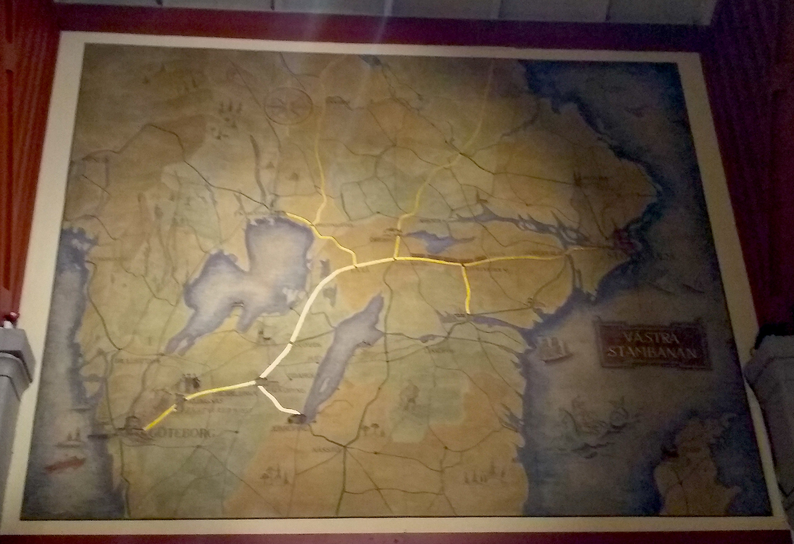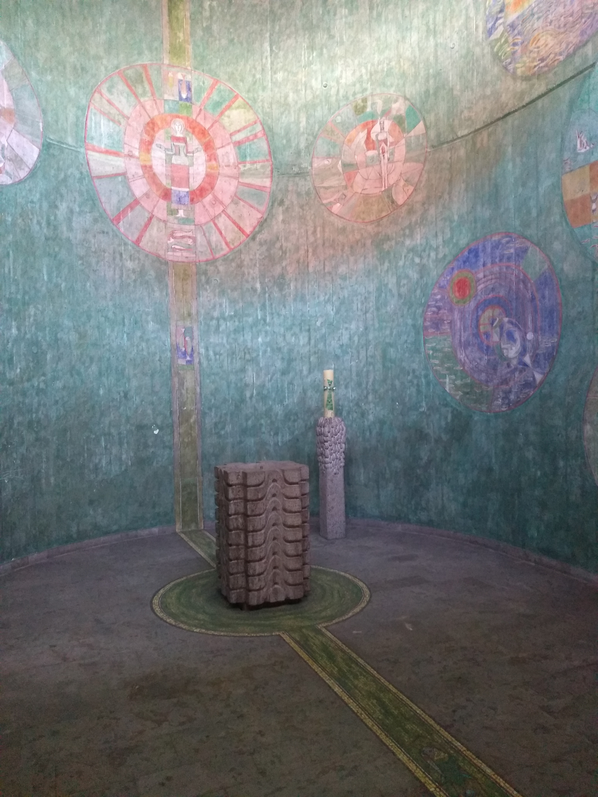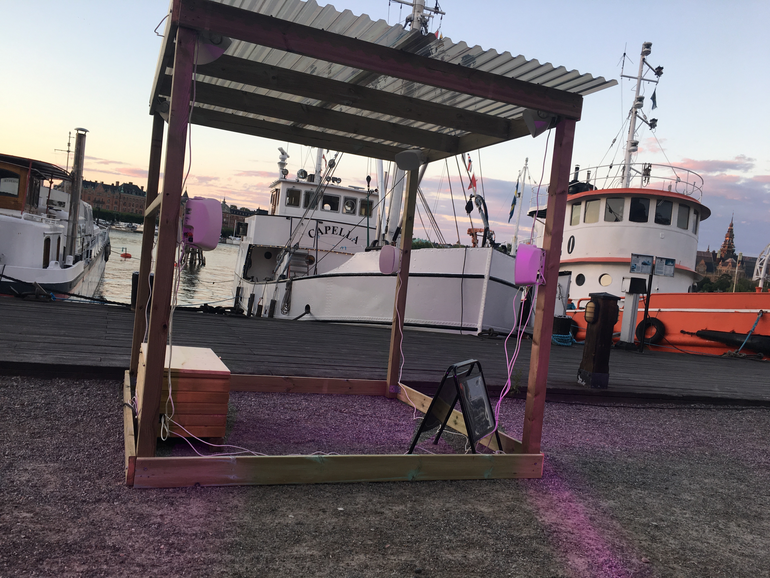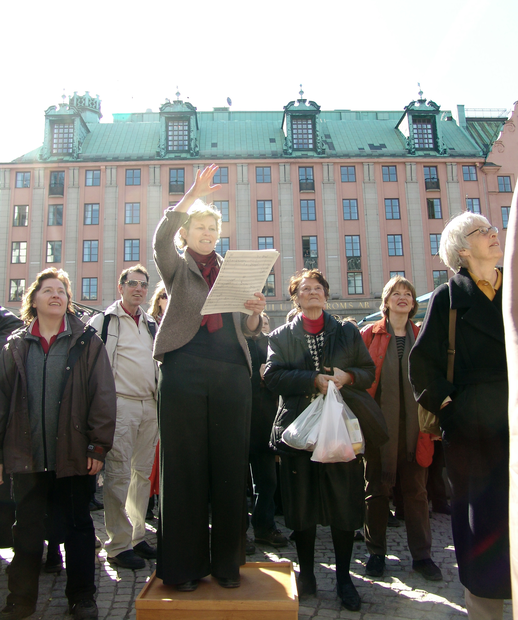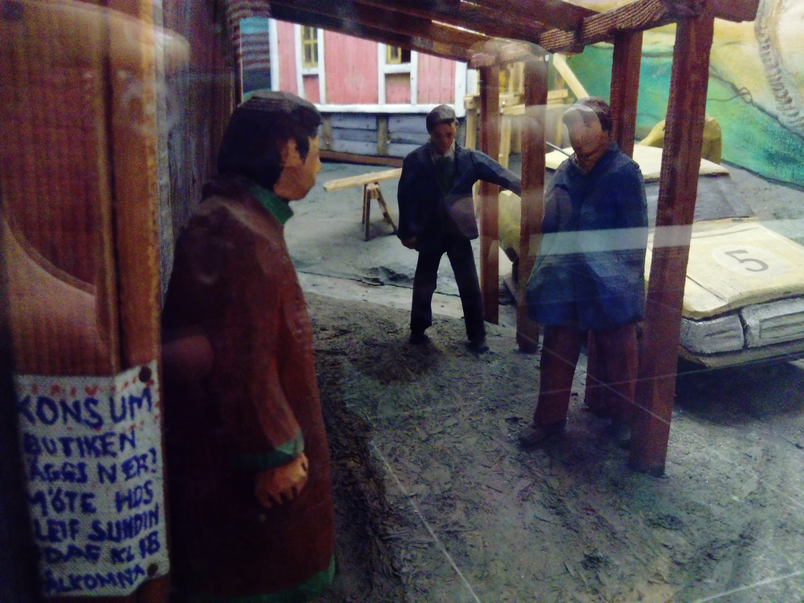When recreating and re-imagining the activities, histories, stories and imagined futures of sites, either to be played in concert venues or as site-specific works, I am far more focused on those layered lives of the site than the vast amount of theoretical writing on site-specificity. I am more interested in receiving and illuminating the information the site itself has to give: in trying to be as close to a vessel for re-imagination as I can make the work and presence of my own hand, rather than placing myself in any particular theoretical school of thought. In this example, Virvelnsträdgård/Garden of Verticils, which was created for the Museum of Modern Art in Stockholm, I recorded or generated all materials for the work with a sole focus on those forces outside myself which the museum's particular place in Stockholm’s history and present illuminate or conceal – especially the force of nostalgia.
Space, Place, Site and Location
It is important to address how I use the terms "space", "place", "site" and "location", both in my own work, and in this exposition. As Yi-Fu-Tuan observes in the opening words of his seminal book, Space and Place: The Perspective of Experience:
Space and Place are basic components of the lived world; we take them for granted. When we think about them, however, they may raise unexpected meanings, and raise questions we had not thought to ask. [1]
He first describes a priest, experiencing the difference in "space" and "spaciousness" between town and country. He then goes on to "place", citing the physicists Bohr and Heisenberg visiting Kronborg Castle, asking "Isn't it strange how this castle changes as soon as one imagines that Hamlet lived here?". [2]
For Henri Lefebvre, in his work The Production of Space, “space” is something which is produced by different hierarchies and societal groups, containing both of what Tuan defines separately as space and place. [3] Gaston Bachelard takes yet another approach to space and place in his work The Poetics of Space. Here, he seeks out memory, daydream, intimacy and imagination in the spaces enclosed in houses, by corners, or cupboards, the outside and inside of spaces, what he calls an "intimate immensity", through poetics and poetry itself. [4]
First, there is "space". Space, in its purest form, is emptiness at the outset; it exists before production commences, and space that is produced is a shaping of this elemental nothingness. It is a resource which can be used to conduct activity in, or it can be turned into a place. In some forms of music, as well as some sound art work, or sound design for theater or film, we talk about spatialization. Spatialization is where we move or set sound or music in space – whether in a concert venue, theater, street, gallery or in some other site – using speakers. Spatialization is often taken up as a basic musical parameter amongst musicians working in these fields, alongside parameters like pitch, density, dynamics or rhythm.
Spatialization has been a factor in recording almost since the inception of the studio, where even early recordings of jazz bands released in mono made the attempt to imply a photo-realistic, spatialized audio image of the musicians. It has developed to influence recording techniques in the lion's share of music recorded in studios. Spatialization is also widely in use in movie theaters across the world, beginning with the release of Walt Disney's Fantasia in 1940. So spatialization is not the sole activity of those involved in the fine arts or concert music, but a technique in use throughout the recording and film industries at every level. Thus space has a double meaning when I use it in my work, one aspect pertaining to the physical, one pertaining to the musical or sonic.
Then there is the word "place". Places exist in space, and there is space both within them and outside them, in abundance or, in the case of many contemporary cities, in short supply. A place, as I use it here, is space that is bounded by conscious articulation; by specified names, features, uses, structures, histories or stories. When contemplating the everyday life of the city, as I am doing in my own work, "place" takes on additional meaning, often as a demarcated community gathering point. Roy Oldenburg called such gathering points "great good places", and wrote about the disappearance of such places in the United States. [5]
A parallel removal of such places, though with a rather different history owing to the "folkhemmet" planning of the mid-twentieth century in Sweden, is also going forward at break-neck speed in Stockholm. This disappearance of places, and their replacement with new ones that lack the sense of community, memory, individuality or openness of those that have been removed, is an important driver of my own work.
"Location" is a more cartographical term than "place". It is more specifically and dispassionately demarcated, and is a more objective term, without the connotations of history and use that "place" has. In music and sound work, we talk about the location of sound or musical materials in space, and in ambisonics, a particular system for recording and creating spatialized music and sound, we talk about higher or lower "resolution" at different "orders" (or numbers of speakers), where resolution corresponds to how exact the location of sounds and musical materials in the room appears, or to the clarity and detail of moving sonic or music gestures from one location to another.
Then there is the term "site". As a term in the arts, it has been used, explored and defined more often and thoroughly in theoretical and practical writings on sound art and visual art, though musicians who are doing site-specific work have begun to use it more. In our vernacular, theoretical discourse about sound, electronic music, spatialization and site-specific work has historically often run parallel to but separate from the theoretical language of the art world – but that is beginning to change. [6] Joanna Demers writes that the difference between sound art or sound installations and music:
… lies in ‘site specificity’, meaning that sounds are constructed to interact with the locations where they are heard. Through this emphasis on location, site-specific art works expose the artificial demarcation between themselves and the venues in which they are encountered … This interaction with location could be acoustical … or it could be thematic … As such, sound art encompasses not only sounds but the architectural and acoustical properties that shape and nurture them, as well as the larger societies that generate them. [7]
However, we can see that many musicians utilize site-specificity in their work. In Sweden, the composer Kim Hedås, who firmly calls her site-specific works music rather than sound art, has made wholly site-specific works at the new Karolinska Hospital in Stockholm, and at the Malmö Live event center. [8, 9] The works are made with the materials of composed music, but function as sound installations in many respects; the work in Malmö is even timed through an intricate system of loops to compliment the activities in the area at any given hour. The composer Karin Rehnqvist composed a site-specific work of scored vocal, choral and brass music, Ropade någon? for the Högtorget square in central Stockholm. Here, musicians stood with the people working in the vegetable stalls that dominate the square, imitating their calls, and then the windows over the square opened with voice and brass material drawn from the life of that square, as well as the kulning singing from Swedish folk music that is a feature of some of Rehnqvist's works, harkening, perhaps, to the countryside from which the venders once came into the city. [10] Composer Kajsa Lindgren has made site-specific compositions around bodies of water, including an installation entitled Dolt ljudlandskap / Hidden Soundscapes made from hydrophone recordings on the island of Skeppsholmen in Stockholm, whose under-water recordings reached into the nautical-sonic surroundings of ships in the harbor, from the suggested structure of a boat-house in surround.[11]
Thus the idea that musicians cannot make site-specific work, because their particular art-form was not considered in the original formulation of "sound art", is out-dated. Indeed, a more constructive way to approach site-specificity as a musician could be to take both disciplines into account. In recent years, that is how I have approached the problem.
In more common vernacular, a "site" is a kind of place, one that specifically holds some activity or history, as in "construction site", or "the site of the former church" or "the site of the planned cafeteria". Thus site-specific work either creates an occurrence of site in a place, or illuminates the site of some occurrence, or both. When I conceive of "sites", I am, in fact, working far more from this definition than the various quarrels about genre pushed by Alan Licht, who has written formative texts on "sound art", with his idea that sonic work concerned with site must somehow be "Beyond Music". [12]
I also use the word "tableau" in my practice. I started using this word to describe almost pageant-like "scenes" in music when I discovered the word being used that way in Stravinsky's work Les Noces. [13]
I use the term “tableau” to describe a technique of evoking several places as a composite space in some of my electroacoustic compositions that are built around psychogeography and re-imagining the city. In a "tableau", multi-spaces constructed of field recordings, synthesizer work and the spatialized motion of elements of those spaces are transposed onto a room or site with the appropriate number of speakers. Rather than aiming for photo-realistic depictions of place, a tableau sets a number of different sonic images, musical materials, and gestural elements in counterpoint, where what is still and what is moving move in musical layers, intended as triggers for a diversity of memories or imaginations of all the places one single place might contain for a myriad of people, beyond my own individual experience.
A chapel depicting places, sites, spaces, locations and tableaus in Catholic mythology. Photo: Katt Hernandez, 2019.
Acoustic treatments made to focus sonic space in the Electronic Music Studio, Stockholm. Photo:Katt Hernandez, 2019.
Malmö Live Cultural Center, where Kim Hedås has a permanent site-specific installation. Photo: Katt Hernandez, 2016.
Kajsa Lindgren's sound installation Dolt ljudlandskap / Hidden Soundscapes at Stockholm Music and Arts festival. Photo: Katt Hernandez, 2016.
